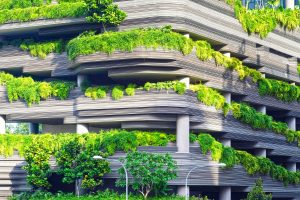Introduction to Sustainability
Imagine our planet as a spaceship traveling through the vast cosmos, carrying all of humanity and the resources we need to survive. Like any good crew, we must take care of our ship, ensuring it remains functional and habitable for future generations. This concept is at the heart of the three pillars of sustainability, and a term that has become a mantra for our generation.
The Need for Sustainability
Consider sustainability a critical mission, a long-term game of chess against the forces of overconsumption and environmental degradation. It’s a strategic balance of meeting our current needs without sacrificing the ability of future generations to meet theirs. As our population grows and our consumption patterns intensify, the need for sustainable practices becomes increasingly urgent.
Origin of the Three Pillars of Sustainability
The “Three Pillars of Sustainability” concept was popularized by the World Summit on Social Development in 2005. This terminology emerged as a need to address the multi-faceted challenges of sustainable development. The term elegantly encapsulates the three key dimensions necessary for long-term societal endurance: Environmental, Economic, and Social sustainability. Each pillar represents a broad set of issues that our global society must address to maintain a healthy, productive, and equitable world.
Environmental Sustainability
Understanding Environmental Sustainability
Environmental sustainability is a delicate dance between humans and nature, where we must take steps to preserve the environment while reaping its benefits. It’s about acknowledging the finite nature of our planet’s resources – from sustainable fish to forestry and everything in between – and making efforts to reduce our ecological footprint and promote biodiversity.
The Role of Renewable Energy
Just as a healthy diet sustains our bodies, renewable energy is the lifeblood of environmental sustainability. Harnessing energy from the sun, wind, and water reduces our reliance on fossil fuels, helping to curb climate change. Renewable energy technologies have seen significant advancements in recent years, making them increasingly cost-effective and accessible.
Waste Management and Recycling
Waste management and recycling are like turning the pages of a book; they allow us to start new chapters without discarding the old. By reducing, reusing, and recycling, we can minimize waste and extend the life cycle of products, reducing our impact on the environment.
Importance of Conservation and Biodiversity
Conservation and biodiversity are the tapestry of life on Earth, rich with various threads that weave together to create a resilient ecosystem. Protecting diverse habitats and species ensures ecosystems’ natural balance and resilience, benefiting humans and all life forms.
Climate Change and Its Mitigation
Climate change, often synonymous with global warming, is like a fever for the Earth. It refers to the long-term warming of the planet, primarily due to human activities like burning fossil fuels and deforestation, which increase concentrations of greenhouse gases in the atmosphere. The consequences are profound and far-reaching, affecting weather patterns, sea levels, and various ecosystems.
Mitigation strategies include:
- Reducing greenhouse gas emissions.
- Enhancing carbon sinks (such as forests).
- Transitioning to a low-carbon economy.
By addressing climate change, we are preserving our planet for future generations.
Economic Sustainability
The Significance of Economic Sustainability
Economic sustainability is like a sturdy bridge connecting today’s prosperity with tomorrow’s potential. It implies a fair and efficient economy that meets present needs while safeguarding future prospects.
Sustainable Business Practices
Sustainable businesses are like magicians, transforming traditional challenges into opportunities for growth and innovation. These enterprises incorporate environmental and social considerations into their operations, making sustainability a core aspect of their strategy.
Circular Economy and Innovative Business Models
Imagine if waste were not the end of the line but a new beginning. Suppose our economy functioned as a loop, like a natural ecosystem. This is the idea behind the circular economy. In this new paradigm, waste becomes a resource, keeping materials in use for as long as possible. Many businesses are now adopting circular models, innovating in product-as-a-service, sharing economy, and resource recovery.
Role of Innovation and Technology
Innovation and technology are the engines of sustainable economic growth. They provide the tools to solve our most pressing challenges, from clean energy and water efficiency to sustainable agriculture and waste reduction.
The Impact of Sustainable Agriculture
Sustainable agriculture is like a nurturing parent, providing for today’s needs while preserving resources for tomorrow. It combines modern technology with traditional methods to produce healthy food, maintain rural livelihoods, and protect the environment.
Industries Championing the Economic Pillar
Industries such as renewable energy, green construction, and sustainable agriculture have embraced the economic pillar, leading the way toward a sustainable future.
Social Sustainability
The Essence of Social Sustainability
Social sustainability is like a great symphony; it requires every instrument to play its part harmoniously. It emphasizes equality, human rights, and social cohesion, providing a safety net for all members of society.
Inclusivity and Equity
Inclusivity and equity are the cornerstones of social sustainability. They ensure that every individual, regardless of their background, has a fair shot at success and the opportunity to contribute to society.
Human Rights and Social Justice
Human rights and social justice are like the rules of the game, ensuring everyone gets fair play. They form the foundation for peaceful, vibrant, and equitable societies.
Community Development and Engagement
Community development and engagement are about weaving a robust social fabric where everyone feels connected and empowered. They foster a sense of belonging, mutual respect, and shared responsibility.
Importance of Education and Awareness
Education and Awareness are the compass that guides us toward sustainability. They empower individuals with knowledge and skills, fostering responsible behavior and inspiring action toward sustainable development.
Industries Excelling in Social Sustainability
Industries such as education, healthcare, and social entrepreneurship have become champions of social sustainability, which is critical in promoting equity, inclusivity, and social well-being.
Balancing the Three Pillars of Sustainability
The Interconnection of the Three Pillars of Sustainability
The three pillars of sustainability are like the legs of a stool, each vital for stability. They are interconnected and interdependent, requiring a balanced and integrated approach for successful sustainable development.
Challenges and Opportunities
While the challenges are significant, ranging from political will and economic barriers to cultural attitudes and technological gaps, they also present tremendous opportunities. By embracing sustainability, we can enhance the quality of life, foster innovation, create new jobs, and ensure our planet’s and society’s long-term viability.
The Role of Government and Policy
Just as a conductor guides an orchestra, governments, and policies provide the roadmap for our sustainability journey. They set the framework within which businesses operate, and individuals live, heading us toward sustainable development.
Global Examples of Government Policies Supporting Sustainability
Governments around the world are embracing sustainability. For instance, the European Union has launched the European Green Deal, aiming for a climate-neutral continent by 2050. In Africa, Kenya has implemented a nationwide ban on single-use plastic bags. In Asia, China has declared war on pollution and is investing heavily in renewable energy. These are just a few examples of how governments integrate the three pillars of sustainability into their policies and agendas.
Industries Where the Three Pillars of Sustainability are Vital
Specific industries, like agriculture, energy, and manufacturing, have a particularly significant impact on sustainability. Their practices directly affect our natural resources, making their transition toward sustainability vital. Agriculture, for instance, can shift towards more sustainable practices like organic farming and permaculture. The energy sector can accelerate the growth towards renewable sources, and manufacturing can adopt circular economy models, reducing waste and extending product lifecycles.
The Implications of Ignoring the Three Pillars of Sustainability
Ignoring the three pillars of sustainability is like sailing a ship without a compass; we may keep moving, but we’ll eventually lose our way. Neglecting sustainability could lead to resource depletion, environmental degradation, economic instability, and social inequalities, jeopardizing our future survival.
Global Warming: A Consequence of Ignoring Sustainability
Global warming represents a grim reality of ignoring sustainability. It’s the increase in Earth’s average surface temperature due to the greenhouse effect caused by increased carbon dioxide and other pollutants. The consequences of global warming are severe, including rising sea levels, extreme weather events, and threats to biodiversity.
Conclusion
The three pillars of sustainability – Environmental, Economic, and Social – are like the three primary colors. Each one is distinct, but when blended together, they create a vibrant spectrum of sustainable development. Let’s color our world with sustainability and ensure a bright, thriving future for all.
FAQs
- Who coined the phrase “three pillars of sustainability” The “Three Pillars of Sustainability” concept was popularized by the World Summit on Social Development in 2005.
- What are some examples of businesses adopting sustainable practices? Many businesses are adopting sustainable practices, such as incorporating renewable energy, implementing waste reduction strategies, and embracing circular economy models.
- Which industries are leading in sustainability? Industries like renewable energy, green construction, sustainable agriculture, education, and healthcare lead the way in sustainability.
- Why is it vital for industries like agriculture, energy, and manufacturing to embrace sustainability? These industries directly impact our natural resources and ecosystems. Their transition towards sustainability can significantly reduce environmental degradation and foster economic and social well-being.
- What could be the consequences of ignoring the three pillars of sustainability? Ignoring sustainability could lead to resource depletion, environmental degradation, economic instability, and social inequalities. Global warming is one grim example of the consequences of neglecting sustainability.





Pingback: Sustainable Palm Oil: Championing a Greener Planet - Eco Life Wise
Pingback: Sustainable Agriculture: A Green Revolution - Eco Life Wise
Pingback: Eco Friendly Gifts: A Sustainable Guide - Eco Life Wise
Pingback: Navigating the World of Sustainable Clothing Brands
Pingback: What Is Sustainability? Unlocking the Power to Transform Our World
Pingback: Sustainable Shoe Brands: A Step Towards a Greener Future
Pingback: Pros and Cons of Solar Energy: Weighing it Up | Eco Life Wise
Pingback: Unlock the Secret to Affordable Sustainable Clothing
Pingback: What Is Sustainable Development? 8 Possible Answers | Eco Life Wise